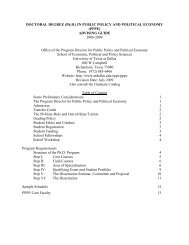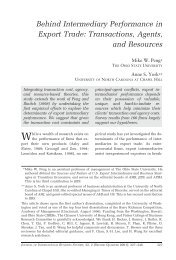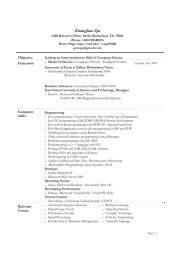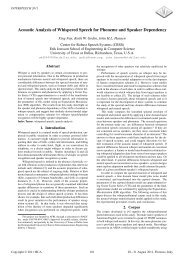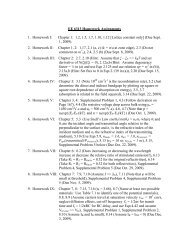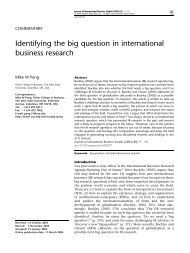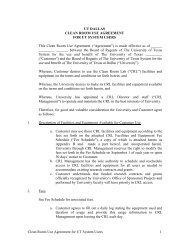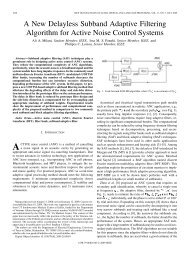SOLUTION FOR HOMEWORK 3, STAT 4352 Welcome to your third ...
SOLUTION FOR HOMEWORK 3, STAT 4352 Welcome to your third ...
SOLUTION FOR HOMEWORK 3, STAT 4352 Welcome to your third ...
You also want an ePaper? Increase the reach of your titles
YUMPU automatically turns print PDFs into web optimized ePapers that Google loves.
Then the posterior pdf is<br />
f Λ|X (λ|x) = fΛ,X (λ, x)<br />
fX (x) = λ(α+x)−1e−λ(1+1/β) Γ(α)βαf X (x)x!<br />
I(λ > 0). (2)<br />
Now I explain you what smart Bayesian statisticians do. They do not calculate f X (x) or<br />
try <strong>to</strong> simplify (2); instead they look at (1) as a density in λ and try <strong>to</strong> guess what family it<br />
is from. Here it is plain <strong>to</strong> realize that the posterior pdf is again Gamma, more exactly it is<br />
Gamma(α + x, β/(1 + β)). Note that the Gamma prior for the Poisson intensity parameter<br />
is the conjugate prior because the posterior is from the same family.<br />
As soon as you realized the posterior distribution, you know what the Bayesian estima<strong>to</strong>r<br />
is: it is the expected value of this Gamma RV, namely<br />
The problem is solved.<br />
ˆΛB = E(Λ|X) = (α + X)[β/(1 + β)] = β(α + X)/(1 + β).<br />
11. Problem 10.94. This is a curious problem on application and analysis of Bayesian<br />
approach. It is given that the observation X is a binomial RV Binom(n = 30, θ) and<br />
someone believes that the probability of success θ is a realization of a Beta random variable<br />
Θ ∼ Beta(α, β). Parameters α and β are not given; instead it is given that EΘ = θ0 = .74<br />
and V ar(Θ) = σ 2 0 = 3 2 = 9. [Do you think that this information is enough <strong>to</strong> find the<br />
parameters of the underlying beta distribution? If “yes”, then what are they?]<br />
Now we are in a position <strong>to</strong> answer the questions.<br />
(a). Using only the prior information (that is, no observation is available), the best MSE<br />
estimate is the prior mean<br />
ˆΘprior = EΘ = .74.<br />
(b) Based on the direct information, the MLE and the MME estima<strong>to</strong>rs are the same<br />
and they are<br />
ˆΘMLE = ˆ ΘMME = ¯ X = X/n = 18/30.<br />
[Please compare answers in (a) and (b) parts. Are they far enough?]<br />
(c) The Bayesian estima<strong>to</strong>r with Θ ∼ Beta(α, β) is (see p.345)<br />
ˆΘB =<br />
X + α<br />
α + β + n .<br />
Now, we can either find α and β from the mean and variance information, or use results of<br />
our homework problem 10.74 and get<br />
where<br />
w =<br />
ˆΘB = w ¯ X + (1 − w)E(Θ),<br />
n<br />
n + θ0(1−θ0)<br />
σ 2 0<br />
− 1 =<br />
8<br />
30<br />
30 + (.74)(.26)<br />
9<br />
− 1 .



